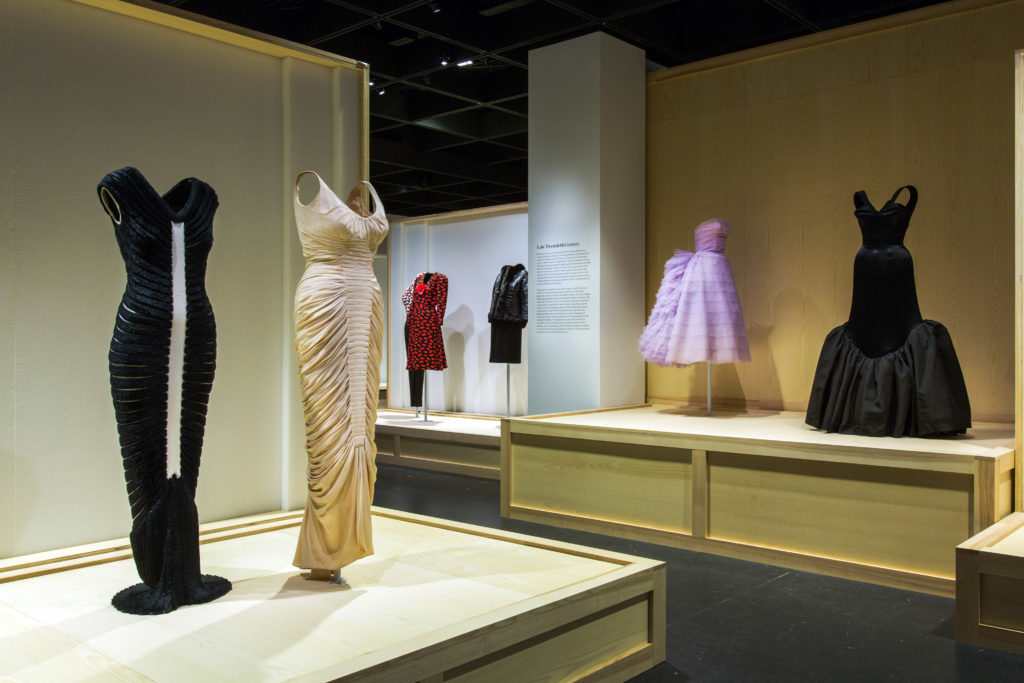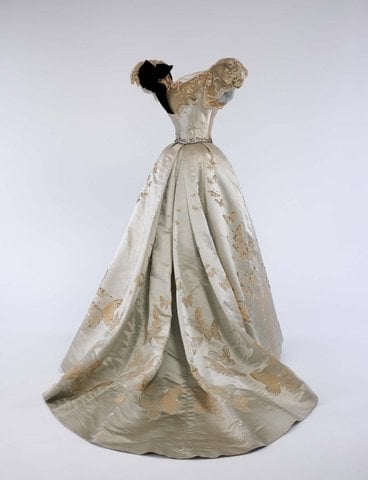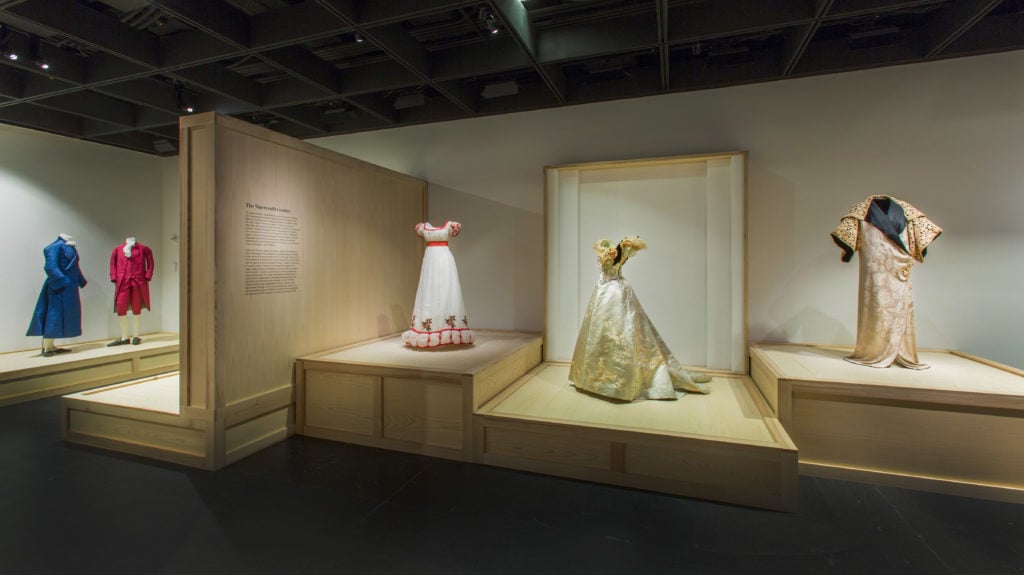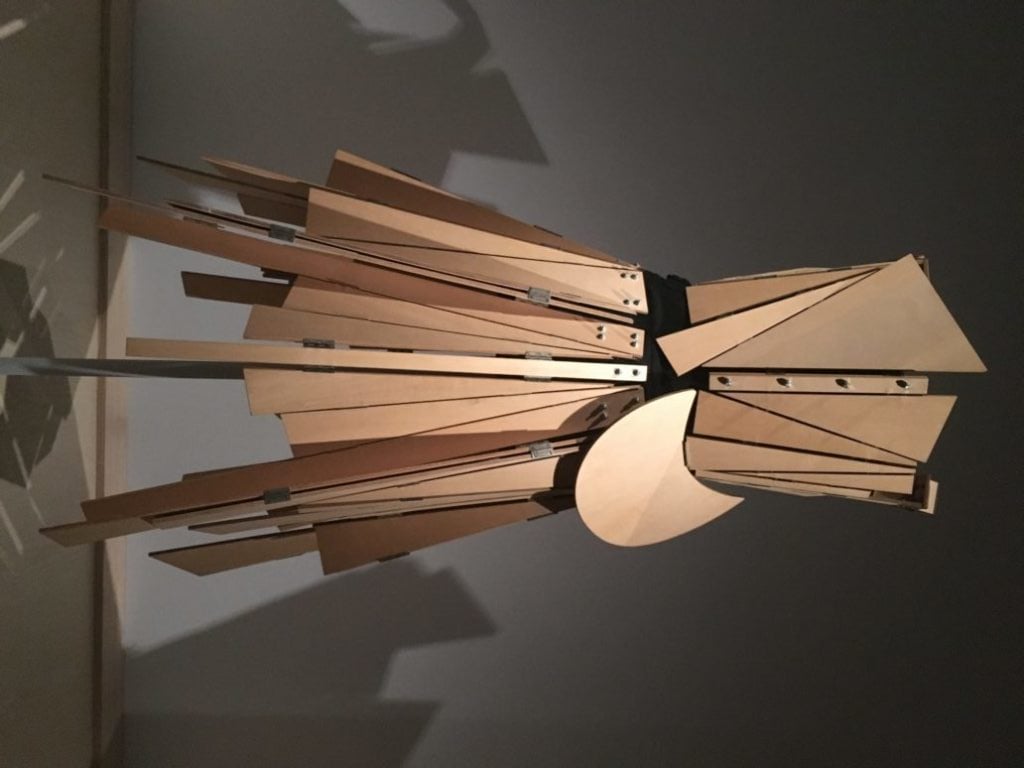On View
‘Masterworks: Unpacking Fashion’ at Met’s Costume Institute Highlights Evolution of Fashion
There are some truly remarkable objects on display.

There are some truly remarkable objects on display.

Over the past decade, theMetropolitan Museum of Art’s Costume Institute in New York has displayed numerous historical and contemporary fashion masterpieces. In its latest endeavor to show how the line between fashion and art can be fluid, “Masterworks: Unpacking Fashion,” focuses on 60 pieces that illustrate the highest forms of technical, aesthetic, and conceptual mastery of form.
With guidance from curator-in-charge Andrew Bolton, assistant curator Jessica Regan has organized a show that “literally and figuratively” unpacks the museum’s archive of Western fashions.

Ball Gown, Jean-Philippe Worth for House of Worth,1898; © The Metropolitan Museum of Art, Photo by Anna-Marie Kellen.
Shown chronologically and spanning four centuries, the exhibit is meant to offer the viewer a different way of looking at fashion by placing garments in a historical context. It begins in the 18th century when surface embellishments and rich textile design was most important. A 1720 blue silk damask and intricate 1760 brocaded French dress depict a strict dress code at court during this time. Layered and heavy, the figure-obscuring shapes of the garments also made it possible for women to hide pregnancies from illicit affairs.

Gallery View, Nineteenth Century; © The Metropolitan Museum of Art.
Onto the 19th century, defined by rapid technological changes, one encounters a stunning light blue dress embroidered with butterflies by Jean-Philippe Worth for House of Worth—the French company known for its technical mastery and impeccable execution.
Even more remarkable is a 1911 opera coat by Paul Poiret. A fierce departure from the constraints of a corset, Poiret’s beautiful ivory and black silk and satin piece was inspired by the lines of the Japanese kimono. During the 20th century we see a shift to simpler, less restrictive fashions for women. Designers alongside Poiret such as Elsa Schiaparelli, Charles James, and Madeleine Vionnet created natural free-flowing silhouettes and turned to modern art movements such as surrealism and futurism for inspiration.

Yohji Yamamoto. Photo by Christie Chu.
In the 21st century, we see a move towards the use of unconventional materials. A 1999 Hussein Chalayan dress made from Tyvek (a synthetic material) is displayed adjacent to a 1991 Yohji Yamamoto dress made from wood panels put together with bolts and hinges. Here, Yamamoto joins together wooden triangles, half-spheres, and rectangles that simultaneously evokes the look of Cubism and demeanor of samurai armor.
Speaking of armor, in a glass vestibules next door, a luminous magenta Issey Miyake bustier made from polyester resin and cellulose nitrate draws you in. Molded from an actual woman’s torso, the piece was created in 1980 as the finale for his autumn/winter collection. Miyake’s interest in unorthodox materials and the relationship between clothing and body lies at the heart of his designs. By revealing the contours of the woman’s form in detail, including nipples and navel, Miyake subverts the idea of clothing entirely.
The last room of the exhibition is dedicated to Harold Koda, the former curator-in-charge who stepped down last year. Bolton approached a number of contemporary designers to ask if they would donate an item from their archive in honor of Koda. Each designer was asked to provide a quote, which was mounted next to each garment, to describe Koda’s influence on fashion—a kind of “love poem to Harold,” Bolton said during the press preview. More than 30 happily obliged, including the likes of Rei Kawakubo , Tom Ford, Jean Paul Gaultier, and Miuccia Prada.
Perhaps its fitting, then, that visitors are first greeted by a dress designed by self-proclaimed “fashion artists” Dutch duo Viktor & Rolf for their autumn/winter 2015 runway show. Presented on a packing crate plinth, the dress mimics a paint-splattered canvas with gold-trimmed paneling, bent and draped for the body. It’s a statement of how far the fashion world has come, but also a nod to the enduring idea that form and function can coexist; in this case, beautifully.
“Masterworks: Unpacking Fashion” opens at the Metropolitan Museum of Art November 18 and runs until February 5.